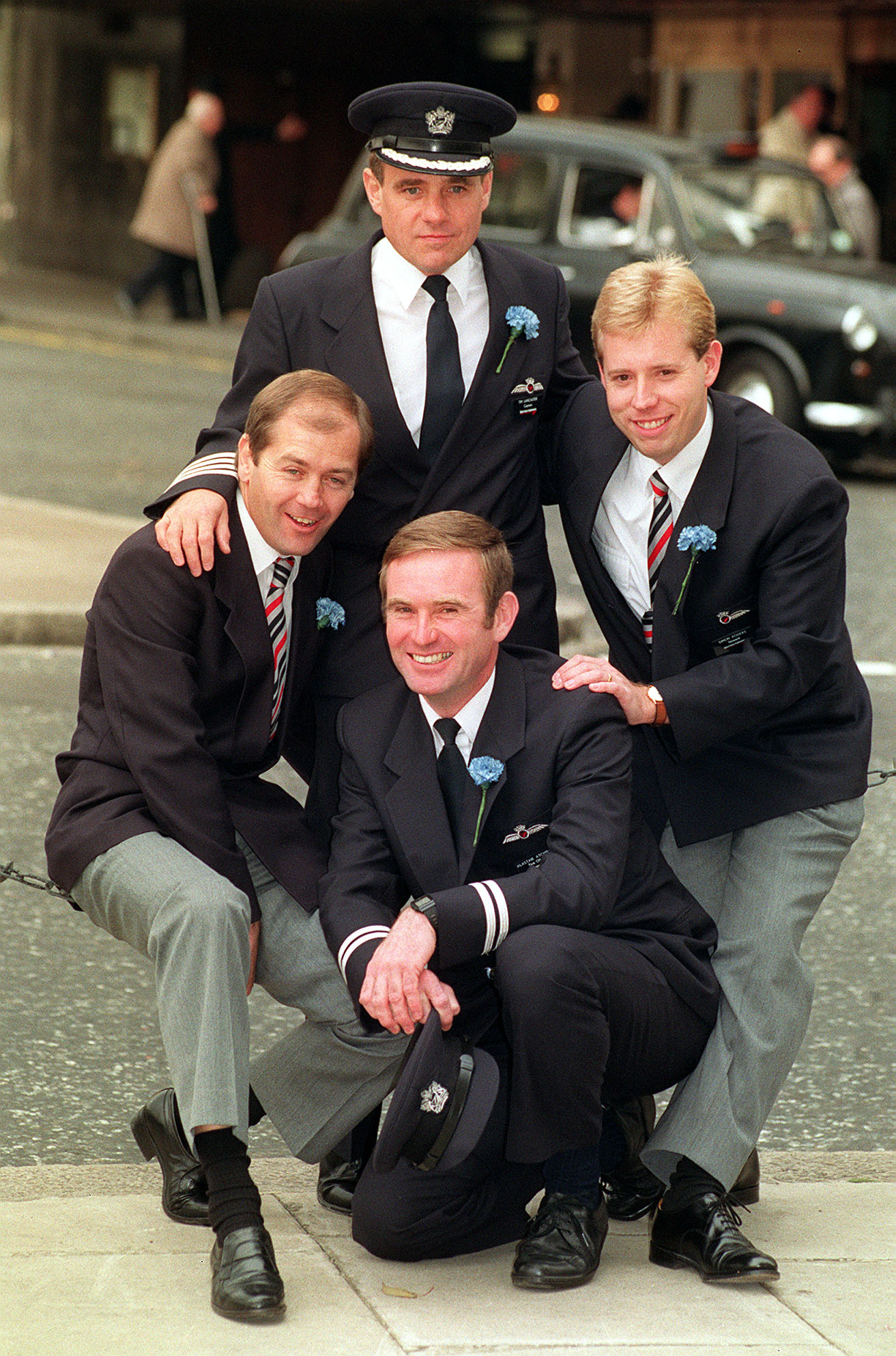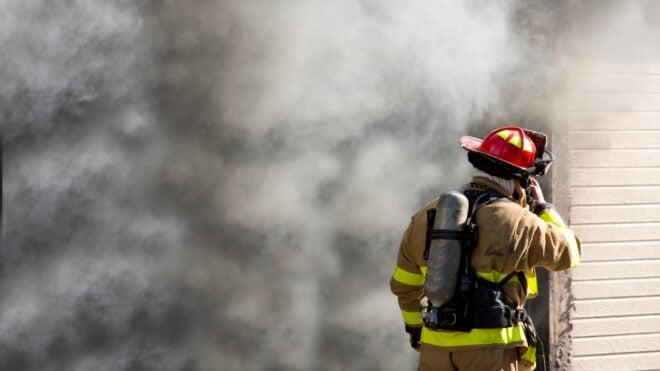
In 1990, British Airways pilot Captain Tim Lancaster was heading a flight from Birmingham to Málaga, Spain, when the unthinkable happened. After completing the first 90 or so miles of the trip, the pilot's window suddenly dislodged from the plane itself.
The vessel was around 17,000 feet in the air, and the immediate impact of the decompression ripped the cockpit door off. Captain Lancaster was soon pushed out of the opening of the plane. Luckily, his legs got caught on the controls, which allowed flight steward Nigel Ogden to grab onto him.
The story of his near-death experience (and ultimate rescue) is pretty harrowing, and it required a lot of teamwork. Luckily, Captain Lancaster made it.
Copilot Alastair Atcheson stepped in.
While Nigel held onto Captain Lancaster, his copilot Alastair Atcheson stepped up to control the plane. It was lucky that Nigel was there at all, as he had arrived in the captain's cabin with tea only moments before the window dislodged.
The next few moments were terrifying.
Captain Lancaster's legs knocked into the autopilot controls as he was lifted from the cockpit, which caused the plane to fall toward the Earth at a rate of over 400 miles an hour. When Nigel grabbed onto Captain Lancaster, he risked flying out of the plane himself.
The cockpit was a mess.
Everything in the cockpit was also flying out of the gaping hole, including things that were bolted down. A second steward, John Heward, grabbed onto Nigel and was able to tie the pilot's seatbelt around him. This kept Nigel from flying out, which also helped Captain Lancaster stay put.
'My God. It's a bomb.'
Nigel wrote about the experience in the Sydney Morning Herald:
"It was 13 minutes after take-off and we had just reached 17,300 feet, 5000 feet beneath our assigned altitude. I went onto the flight deck and asked if they'd like tea. I was just stepping out, with my hand on the door handle, when there was an enormous explosion and the door was blown out of my hands. I thought, 'My God. It's a bomb.'"
Captain Lancaster was in a state.
"His shirt had been pulled off his back and his body was bent upwards, doubled over round the top of the aircraft. His legs were jammed forward, disconnecting the autopilot, and the flight door was resting on the controls, sending the plane hurtling down at nearly 650kmh through some of the most congested skies in the world."
He was also getting heavier.
Nigel also added that the pressure caused Captain Lancaster to feel heavier than he was.
"I was still holding on to Tim but the pressure made him weigh the equivalent of 500 pounds (about 200 kilograms). It was a good thing I'd had so much training at rugby tackles, but my arms were getting colder and colder and I could feel them being pulled out of their sockets."
They almost lost him.
"I was still holding Tim, but my arms were getting weaker, and then he slipped. I thought I was going to lose him, but he ended up bent in a U-shape around the windows. His face was banging against the window with blood coming out of his nose and the side of his head, his arms were flailing and seemed about 6 feet (1.8 metres) long. Most terrifyingly, his eyes were wide open. I'll never forget that sight as long as I live."
They even almost let go of Captain Lancaster.
For a few harrowing moments, the crew feared they would have to let go of Captain Lancaster completely. While they tried to hang onto the captain and to make sense of what was happening, the copilot was furiously working to keep everyone safe.
"By now, Alistair was talking to air traffic control, who were talking him through landing at Southampton Airport. All pilot training is done on the basis of two pilots, one to fly and one doing the emergency drill, but Alistair was alone, with a crew he didn't know and relying on memory, because all the manuals and charts had blown away. He asked for a runway of 2500 metres because he was worried that the plane was so heavy with fuel, a tyre would burst or it would go off the runway, but all they could offer was 1800 metres."
Somehow, they landed perfectly.
While the passengers and crew were understandably panicking, the copilot landed cleanly.
"But, in spite of everything, Alistair did the most amazing landing, what we call a greaser – completely smooth and stopping the aircraft only three-quarters of the way down the runway."
The entire experience was only 18 minutes long.
Nigel and the rest of the flight attendants were able to get all the passengers off the flight quickly, while Captain Lancaster was tended to by medical professionals.
"He was lying there, covered in blood, but to my amazement I heard him say: 'I want to eat." I just exclaimed: 'Typical bloody pilot.'"
Their injuries were pretty minimal, considering.

Surprisingly, Captain Lancaster and Nigel survived the ordeal with minimal injuries. Nigel came away with a dislocated shoulder, frostbitten face, and some frostbite damage to his left eye, while Captain Lancaster suffered frostbite, fractures to his arm and wrist, and a broken thumb. He was even back to flying planes in five months.
The cause of the event was also revealed: An engineer had accidentally fit the window with bolts that were too small.




